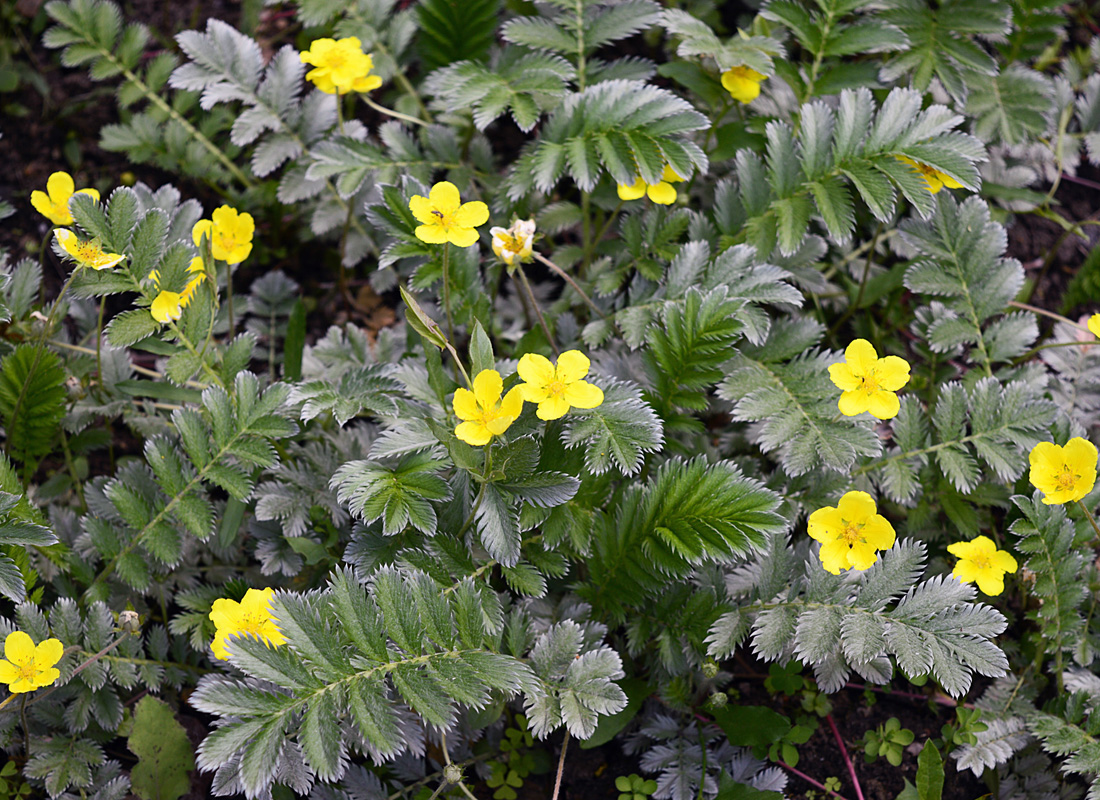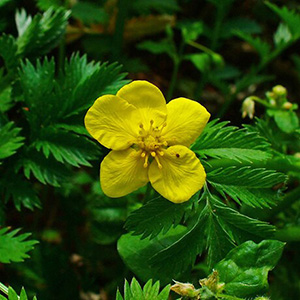Pacific Silverweed ~ Bundle of 3 Bare-root
- Current Stock:
- 0
- Other Names:
- Wild Sweet Potato, Silverweed Cinquefoil
- Latin Name:
- Argentina egedii
Pacific Silverweed is a West Coast native, perennial groundcover with yellow flowers, edible leaves, and edible roots that taste like sweet potatoes.
Edible Uses
The prized portion of this native food are its sweet roots, tasting like sweet potatoes or parsnips. They are bitter when raw, but lose most of their bitterness when steamed or roasted. Native American peoples, wild foragers, and sustainable gardeners have and continue to value this plant as food. It is often harvested and eaten alongside Springbank Clover.
Naturally, the roots are quite nutritious as well, having an amino acid profile similar to that of barley, making it a complete protein. Additionally, the young leaves of Pacific Silverweed can be eaten raw in salads, or cooked as a potherb.
CAUTION: Silverweed should not be eaten during pregnancy, as it stimulates the uterine muscle.
Ornamental Qualities
Pacific Silverweed’s most charming characteristics are its abundant yellow flowers blooming spring through summer, the unique silvery underside of its leaves, and its bright red runners. In addition, Silverweed can form a lush green groundcover in wet and sunny places where many other plants wouldn’t grow. It can spread vigorously, which isn’t a problem for backyard foragers! It looks great with Springbank Clover and Coastal Strawberry.
Environment and Culture
Pacific Silverweed’s wild home is in moist coastal habitats up and down the West Coast (and some in New England). It can be found growing with Slender Hairgrass and Panicled Bulrush, and birds, rabbits, and chipmunks can be found dining on its seeds and foliage. A great plant for soil stabilization along open streambanks.
Once established, it’s a very low-maintenance and abundant perennial vegetable. Perfect candidate for sustainable gardening and agriculture. Likely could be bred to increase root size.
Northwest Native American tribes today still value this special plant as food, medicine, and family. Despite great cultural losses, they continue to work towards stewarding and restoring wild populations, both strengthening the integrity of the ecology and sustaining their cultural heritage and wisdom. These strong and recovering peoples and plants deserve our respect, gratitude, and reparations. (Learn more & how to help on our Charitable Giving page.)
Harvest, Care, and Preparation
Pacific Silverweed roots are thin, but numerous in healthy stands. There are two types - curly and long roots. Wait until you have a healthy patch established then, in Fall, carefully dig around the edge of the patch uprooting the longer older roots and leaving younger root pieces to re-sprout. Young leaves can be picked by hand or with scissors.
Once harvested, roots can be cleaned, cut to size, and steamed roasted or baked until soft. We recommend baking with olive oil and salt alongside other favorite root vegetables. Leaves can be eaten raw in salads, steamed with other green, or added to stir-fries. Enjoy!
Native Range: CA, OR, WA, BC
USDA zones: 4-8
Ease of Care: Very Easy
Deer Resistance: High
Light Requirements: Full Sun to Light Shade
Soil Type: Any, prefers slightly alkaline
Water Requirements: Moist to Wet
Pollination: Self-fertile
Bearing Age: 2 yrs. seed, 1 yr from rhizome
Size at Maturity: to 1.5 feet
Plant Spacing: 8-12 inches
Bloom Time: Spring-Summer
Harvest Time: Sweetest roots in Fall




